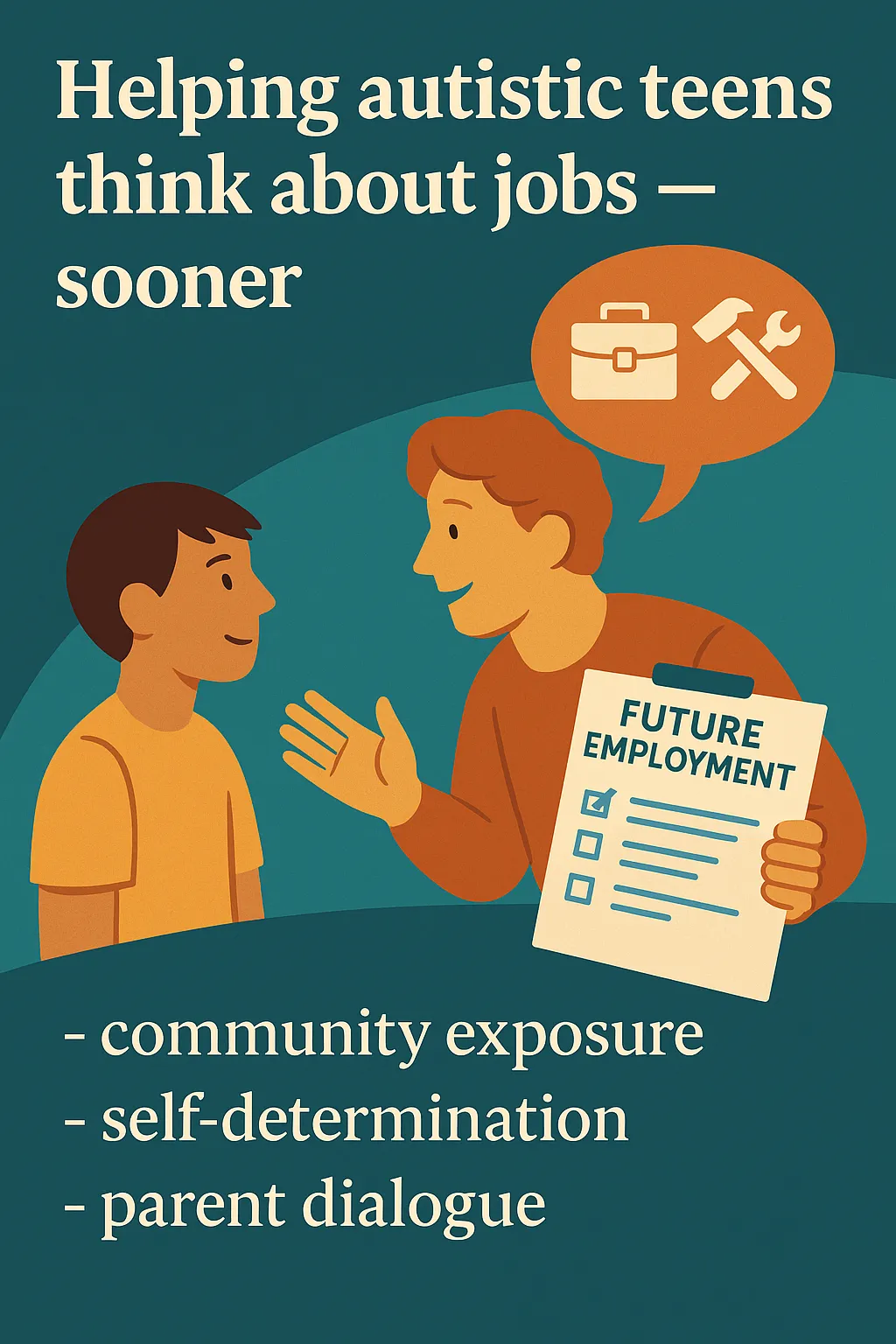When the Services Cliff Starts Early Enough to Climb
 Every autistic person — and every family — learns this term eventually: the services cliff.
Every autistic person — and every family — learns this term eventually: the services cliff.
It’s the point around age 22 when school-based supports vanish, and adult systems are expected to take over. Except they don’t. Or they do in fragments. Or they require paperwork no one can explain, phone calls no one returns and waitlists that outlast your optimism.
That’s the cliff. And a new fellowship at the Medical University of South Carolina — hat tip to The Post & Courier — is trying to back people away from the edge.
Start Before the Fall
Matthew Husband, an occupational therapy doctoral fellow at MUSC, is reframing the problem: don’t just catch autistic adults after they graduate. Start younger. As early as middle school.
His model? Ask students what kind of work they might want someday. Ask what they’re good at. Give them real-world chances to try it: folding napkins at a restaurant, sorting thread in a factory, stocking shelves at a grocery store.
Then let them reflect. Was it loud? Was it predictable? Did it fit? Did it feel like a future?
It’s called the Get to Work program. And it doesn’t pretend to solve systemic abandonment. But it does something rare: it treats autistic youth as capable of self-direction before someone else directs their future for them.
Let the Students Speak
Too often, autistic students are told what their lives will be: what jobs they can do, what supports they’ll need, what goals are "realistic."
This program reverses the flow. It begins with questions, not instructions.
And the results aren’t subtle. Students who rode in silence to their first job site came back laughing. Chatting. Processing. Something had shifted: not just in what they experienced, but in who they were allowed to imagine themselves becoming.
Parents noticed, too. One realized her child might be able to learn to drive after all. Another saw college or independent living as possible, where before it had been a closed door.
Systems Can Adapt, Too
The program doesn’t ignore structure. It names it. Husband describes the "interoperability gap" — the space between agencies that don’t coordinate, between vocational rehab, education and disability services. It’s a real barrier. But one that gets smaller the earlier you start.
Of course, South Carolina has just four post-secondary transition coordinators for autistic adults in the entire state. That statistic alone deserves more outrage. But this program doesn’t wait for the system to fix itself. It begins where support still exists: in school.
Where It Could Go Further
The fellowship is promising. But it still reflects a familiar pattern: non-autistic professionals designing services for autistic people, with good intent but limited co-authorship.
Imagine this same program with autistic mentors. Autistic facilitators. Autistic researchers shaping the design. That would not just expand the program’s insight — it would root its credibility in lived experience.
Because empowerment isn’t just asking someone what they want. It’s including them in building the system that lets them choose.
Final Thought
Employment readiness doesn’t begin at age 22. It begins when someone says, "You have a future." And means it.
This program starts there. It isn’t perfect. But it moves toward dignity earlier than most. And that alone makes it worth watching.
Because if the services cliff is real, the answer isn’t to fall more softly.
It’s to build a bridge before anyone gets near the edge.